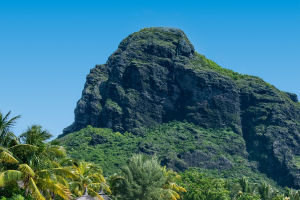Have you ever read a travel story that made you think, "This is a place I-must visit"? Chichen Itza often has that effect on travelers.
This ancient Mayan archaeological site in Mexico’s Yucatan Peninsula captivates with its rich history, breathtaking architecture, and mysterious allure.
Once you see the iconic image of El Castillo, the majestic step pyramid, you'll understand why it's considered a must-visit destination.
Chichen Itza - A Glimpse into History
Chichen Itza, one of the New Seven Wonders of the World, was inhabited by the Maya civilization between AD 750 and AD 1200. It served as a significant city and ceremonial hub. The name "Chichen Itza" translates to "Mouth of the Well of the Itza," highlighting the site's connection to nearby cenotes (natural sinkholes).
The city showcases influences from the Maya, Toltec, and Itza cultures, though the exact timeline of each is unclear. Despite the detailed architecture, little is known about the daily lives of its inhabitants. Visitors are left in awe of the structures, wishing for more insights into the people who created them.
El Castillo – The Temple of Kukulcan
A Symbol of Mayan Mastery
El Castillo, the central pyramid, rises 30 meters (100 feet) tall. Built as a temple dedicated to the feathered serpent god-Kukulcan, its design reflects incredible astronomical precision. The pyramid's 365 steps represent the days of the year, and during the spring and autumn equinoxes, sunlight creates the illusion of a serpent slithering down the structure.
Practical Tips
Visiting early, as soon as gates open at 8 a.m., provides a serene experience before the crowds arrive. By mid-morning, the area becomes bustling with tourists from nearby resorts.
The Great Ball Court
A Monument to Ancient Games
The Great Ball Court is another highlight, measuring a colossal 135 meters (443 feet) by 65 meters (213 feet). Players aimed to hit a ball through high stone rings using only their elbows, wrists, and hips. The game had a grim conclusion, as one team’s captain or members were sacrificed to the gods.
El Caracol – The Observatory
A Window to the Stars
El Caracol, or "The Snail," served as an observatory for studying celestial events. Its spiral staircase and unique design reflect the Mayan fascination with astronomy.
The Sacred Cenote
A Place of Ritual Sacrifices
Located 300 meters north of the main complex, the Sacred Cenote holds a somber history. Archaeological excavations have revealed the remains of many sacrificial victims, including children and young adults, offering a glimpse into the site's ritualistic past.
The Temple of Warriors and Thousand Columns
Impressive Carvings
Dear Lykkers, the temple of warriors is adorned with carvings of warriors, some depicted as captives. Nearby, rows of circular columns stretch endlessly, creating an intriguing sight.
Tzompantli – The Wall of Skulls
A Chilling Display
This T-shaped platform features carvings of skulls, warriors, and serpents. It is believed to have displayed the heads of sacrificial victims, adding to the site's mystique.
Visiting Chichen Itza
Chichen Itza is open daily from 8 a.m. to 4:30 or 5:00 p.m. Arriving before 10 a.m. helps avoid the rush of tour groups. The entrance fee is 242 pesos, typically paid in two parts. Carry cash as card machines are unreliable.
A sound and light show is available in the evenings, though it is worth checking for English translations if needed. Sundays attract large crowds due to free entry for Mexican citizens.
Getting to Chichen Itza
The site is a two-and-a-half-hour drive from Cancun and closer to Merida or Valladolid. Toll roads are in excellent condition, but having enough cash for payments is advisable. Avoid navigating the area after dark, as roads near Piste can be challenging.
Where to Stay
Mayaland Hotel, located near Chichen Itza, offers convenient access to the ruins and rooms with views of El Caracol. For budget-friendly options, the nearby town of Piste has various accommodations to suit different preferences.


